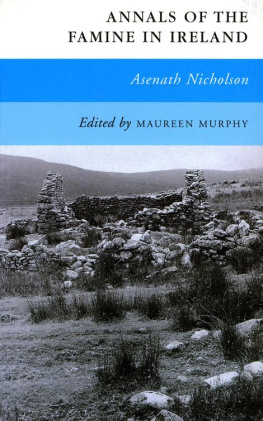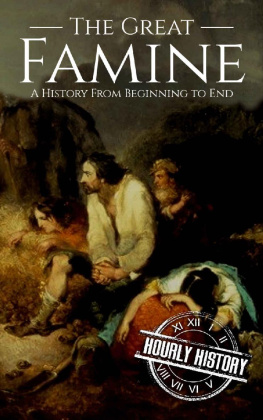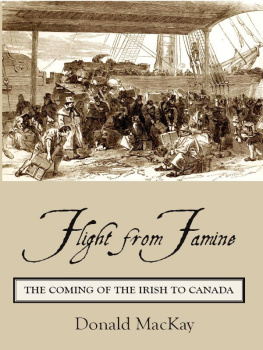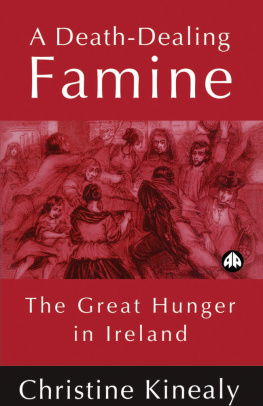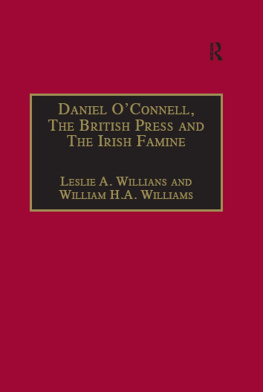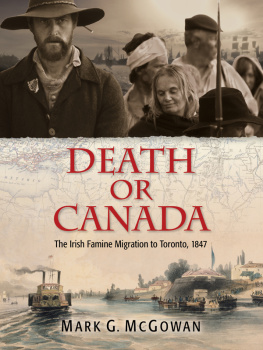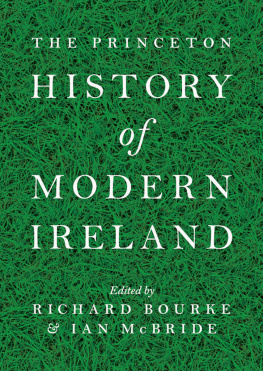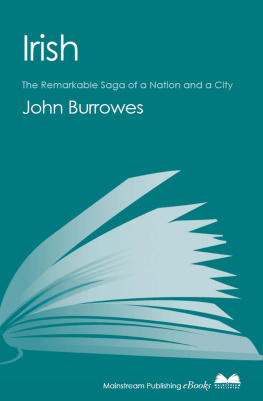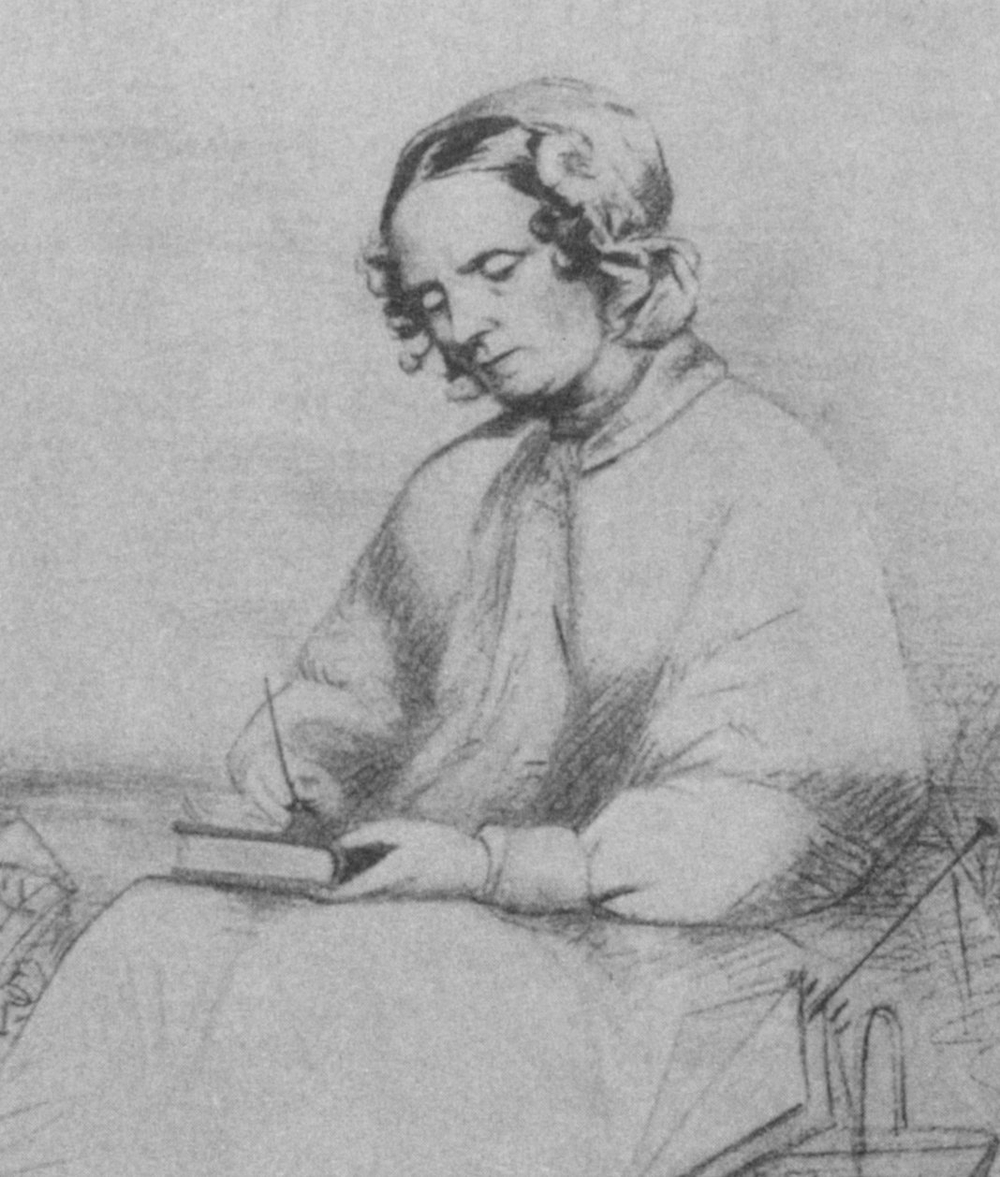In January 1847, during the worst winter of the Famine, the American reformer Asenath Hatch Nicholson began her one-woman relief operation in Dublin: a soup kitchen in Cook Street and visits to the poor in the lanes of the Liberties. Apart from a sojourn in Scotland, she had been in Ireland for nearly three years, walking through the countryside reading Scripture and distributing Bibles in Irish and in English, drawn from the depths of the large black bearskin muff that she carried.
Nicholsons account of her travels, Irelands welcome to the stranger;or, An Excursion through Ireland in 1844 and 1845, for the purpose ofinvestigating the condition of the poor (1847), is one of the most valuable records we have of Ireland on the eve of the Famine. Annals of theFamine (1851) is the extraordinary narrative of Nicholsons work and witness in Dublin and in the west of Ireland. To understand this remarkable woman teacher, reformer, writer and traveller it is necessary to look at three shaping forces in her life: her parents, her vocation as a teacher and her active advocacy of reform through temperance, vegetarianism, abolitionism and peace.
Nicholson was born on the New England frontier, in the village of Chelsea in the White River valley of eastern Vermont. While Nicholsons parents, Michael Hatch (c. 1747-1830) and his wife Martha (1745-1837), were not named among Chelseas first settlers who arrived in 1784, Michael Hatch of Ackworth, Cheshire County, New Hampshire arrived in Chelsea on 7 June, 1788 (Russell, Founders).
Asenath Hatch was born on 24 February 1792 in Chelsea. Her name was common enough in the Hatch family; the Genealogy and History of the Hatch Family lists four other Asenaths in her generation alone (HatchHale, 135, 143, 144). It was a prophetic name for her, for the Asenath of Genesis 41 was the Egyptian daughter of the priest of On (Heliopolis) who was given as a wife to Joseph. She shared Josephs life while he managed the famine food supply. In her own time, Asenath Nicholson would manage her own scanty resources to feed and clothe the Irish poor.
Nicholsons parents were probably members of Chelseas first Congregational Church, the branch of American Protestantism that emphasised the Bible, individual freedom and local congregational autonomy. The conservative, zealous Revd Lathrop Thompson was pastor during Nicholsons childhood (Chelsea, 16). The Hatches Christianity was bound not only by the Congregationalist doctrines of covenant and personal salvation; they provided examples of tolerance and charity to their children David (1776-1851), Benjamin (b. 1782) and Asenath. Michael Hatch hung no Quakers, nor put any men in a corner of the church because they had a colored skin. Martha Hatch remembered the poor and entertained strangers, hated oppression, scorned a mean act and dealt justly by all (Welcome, iii).
Nicholson also took on her fathers reputation for frank speech. A local Chelsea legend recalls Mike Hatchs confrontation with a traveller who got himself buried in snow, rescued and buried again. After a scolding by Hatch, the man identified himself as the Governor of Vermont. Hatch replied, I cant in conscience take a word back (Chelsea Archives). That habit of direct speech lived in his daughter who reported that her outspoken ways frequently got her into trouble, including expulsion from the Protestant missionary colonies at Ventry and at Achill. With her self-deprecating humour she warned the unnamed recipient of her 30 October, 1847 letter from Belmullet that she would be applying some of those offensive points in my character which I so eminently possess in her call for land reform and better economic opportunities for the Irish poor (Annals, 100).
Her candour could be a trial to those she met, but her forthrightness and her integrity made her a reliable observer of the Famine in Ireland. Her friend the Quaker printer Richard Davis Webb (1805-72) spoke of those qualities when he wrote to his friend and confidante, the American abolitionist Maria Chapman (1806-85), from Dublin, 16 September 1847: I know no more impartial-minded, scrupulous, truth-loving person than Mrs Nicholson (Webb, Richard, Letters).
Nicholsons mother, aptly named for the Martha of the New Testament, died in 1837 at the age of ninety-one, leaving her daughter her example of persistent hard work and self-sufficiency, qualities essential to survival in the early days of a pioneering community that practised warning out those who might prove to be a burden to the settlement (Chelsea, 8). Nicholson recalled her mother saying, The sun never looked down upon me in bed, when I was well (Nature, 1846, 35).
In the spring of 1847, working on her own for the poor of Dublin, Nicholson was grateful for her mothers schooling:
Never before in all my privations in Ireland, had I tested the value of being early trained under the discipline of a rational mother, who fitted me, when a child, for the exigencies of life, who not only by precept taught me, that in going through the journey of this world I should meet with rough roads and stormy weather, and not always have a covered carriage, that sometimes I should have a hot supper and sometimes a cold one, sometimes a welcoming greeting and sometimes a repulsive one, but she had instructed me too, by precept and example, that my hands were to be employed in all that was useful and that idleness was both disgraceful and sinful (Annals, 53-4).
It is not surprising then, that indefatigable appears as Nicholsons favourite term of approval for those who worked unremittingly for the poor. It is the adjective that she uses to describe some curates of the Established Church and some rural Catholic priests, the South Presentation nuns in Cork and the Belfast Ladies Association, individuals like the Quaker Abraham Beale (1793-1847) of Cork, the Belfast worker for social and cultural causes Mary Ann McCracken (1776-1860), the poet/curate Charles Wolfe (1791-1823), the improving landlord George Hill (1801-79) and even the master and matron of the Galway Work-house who do not make merchandise of the poor for gain (Annals, 146).
Nicholson was critical of what she considered the idleness and indulgence of many middle and upperclass Dublin women who left the management of their households to servants (Annals, 40). She must have pressed this point with Richard Webbs sister-in-law, Maria Waring (1818-74), who found Nicholson repulsive but fascinating. Waring must have taken up some of her views about domestic economy, because she wrote to Lydia Shackleton at that time saying, I believe we ought to do our own housework, make our own fires, dress our own food, do the work of servants, instead of having others do it (Harrison, 56-57).
Nicholson admired the women of the Belfast Ladies Association for the Relief of Irish Destitution and contrasted their active work among the poor with Dublin women who were inclined to alms-giving and to excusing themselves from personal labour. But giving and doing are antipodes in her who has never been trained to domestic duties (Annals, 57).
To the example of her mother, Nicholson added the biblical models of Solomon and Pauls virtuous women and housekeepers whose only ornaments were their good works. Nicholson believed such a virtuous woman was one who used her skills of household management for her community as well as for her family.
While Nicholson came from Congregationalist New England stock, her own later non-denominational Bible Christianity emphasised charity, equality and the capacity of individuals to reform themselves. These beliefs informed her life and her vocation. Trained as a teacher, Nicholson taught first in Chelsea, perhaps in the school-house in her own District #2 where Michael Hatch was listed as living in 1807 when Nicholson was fifteen (

